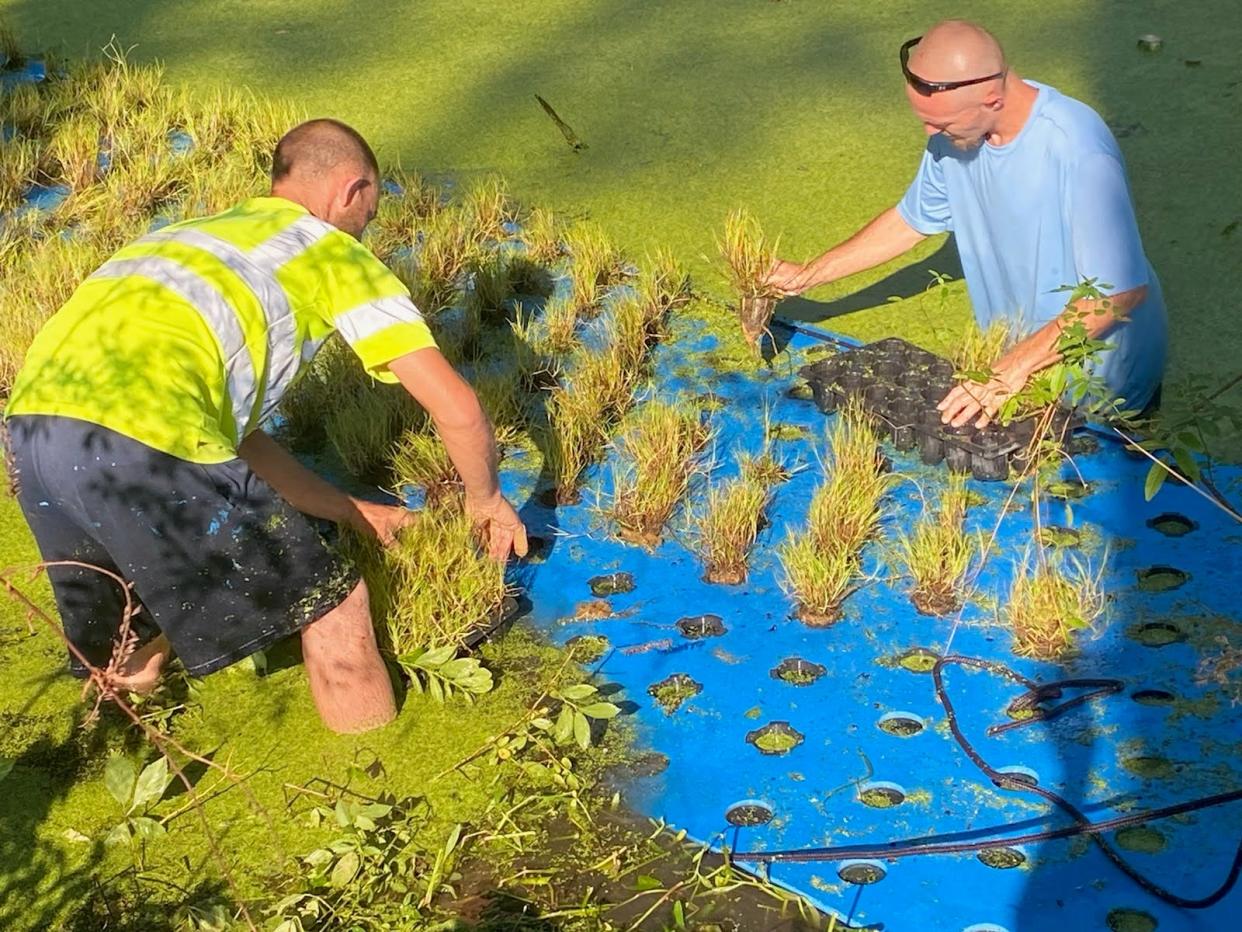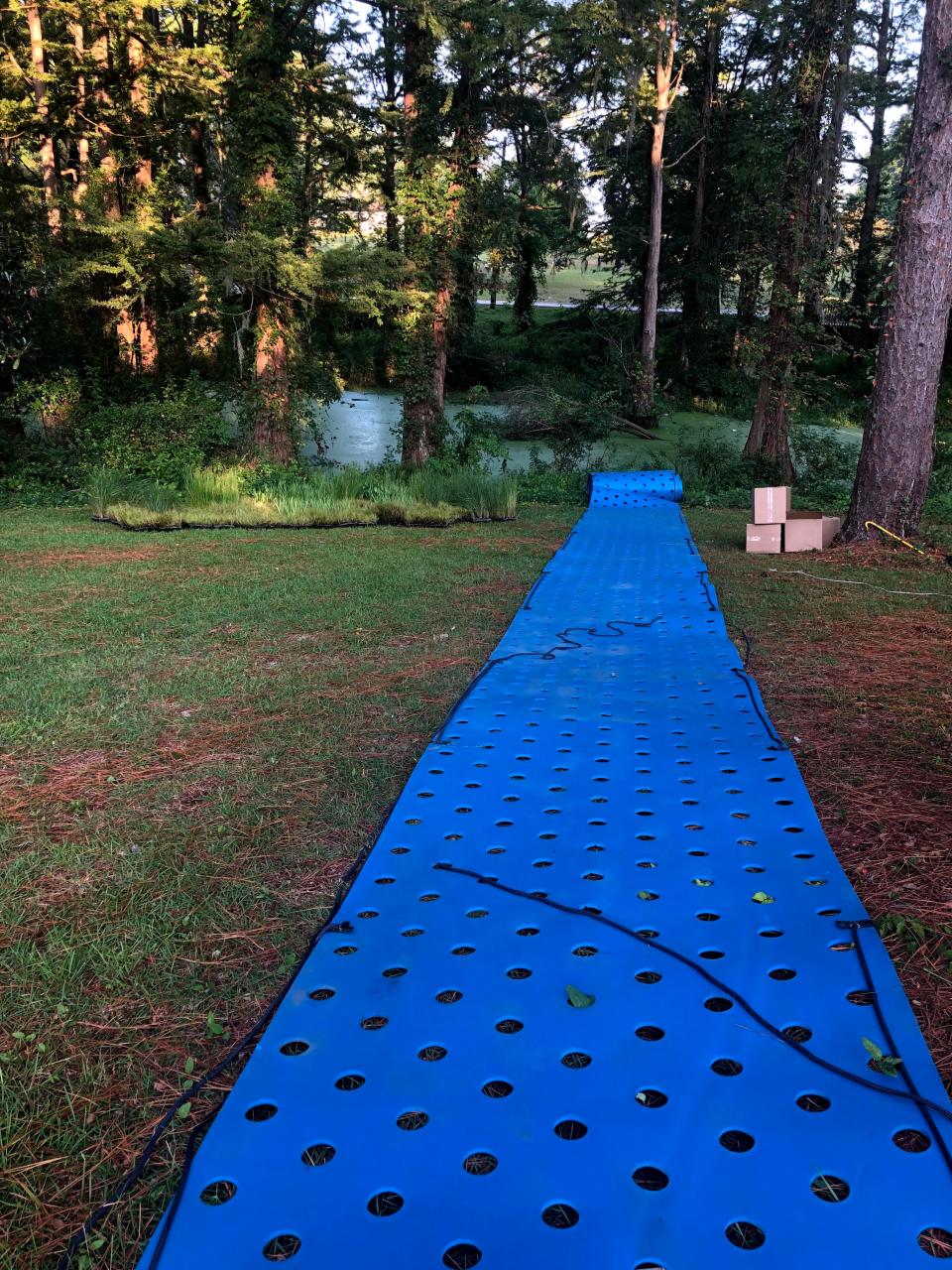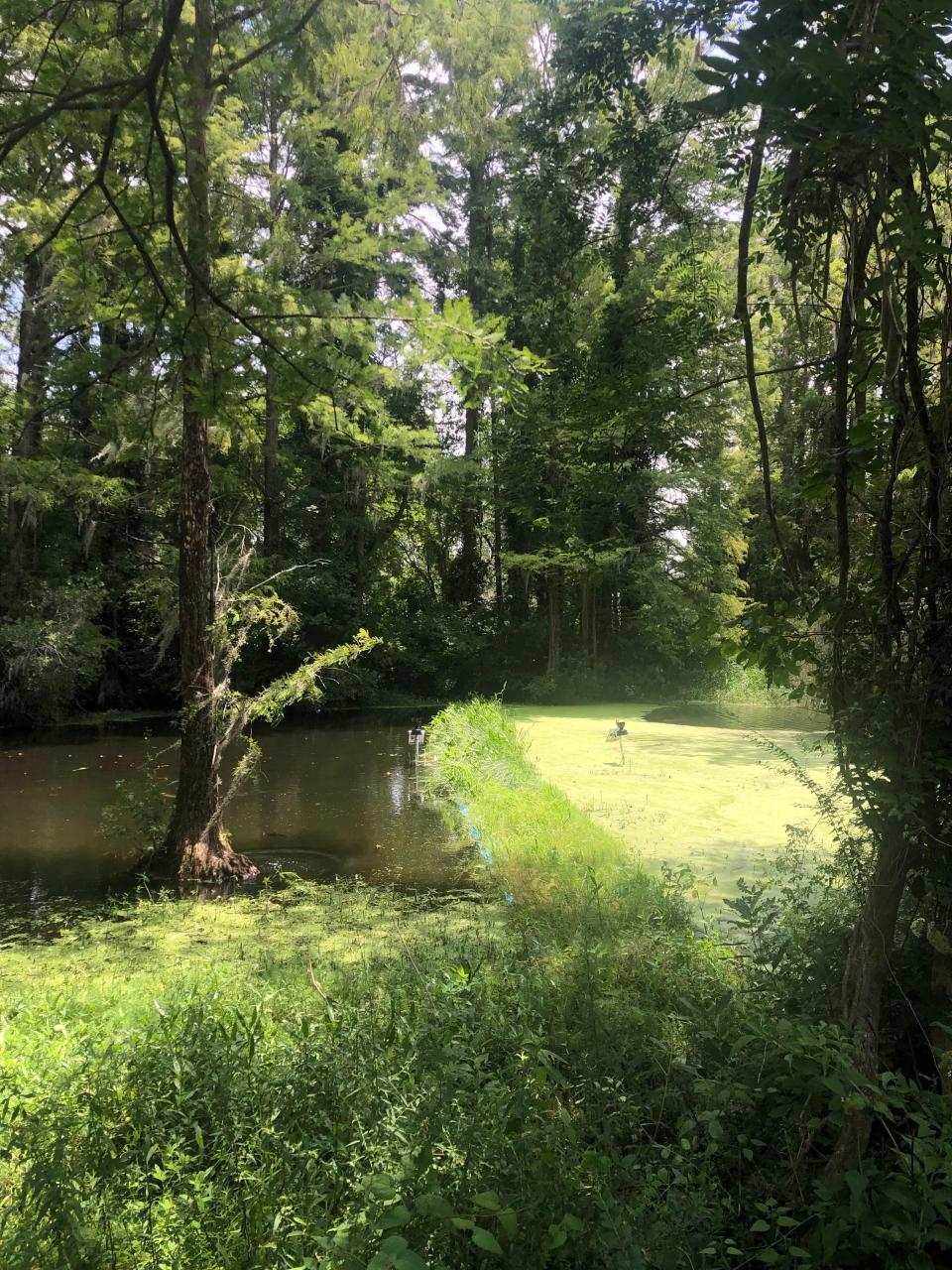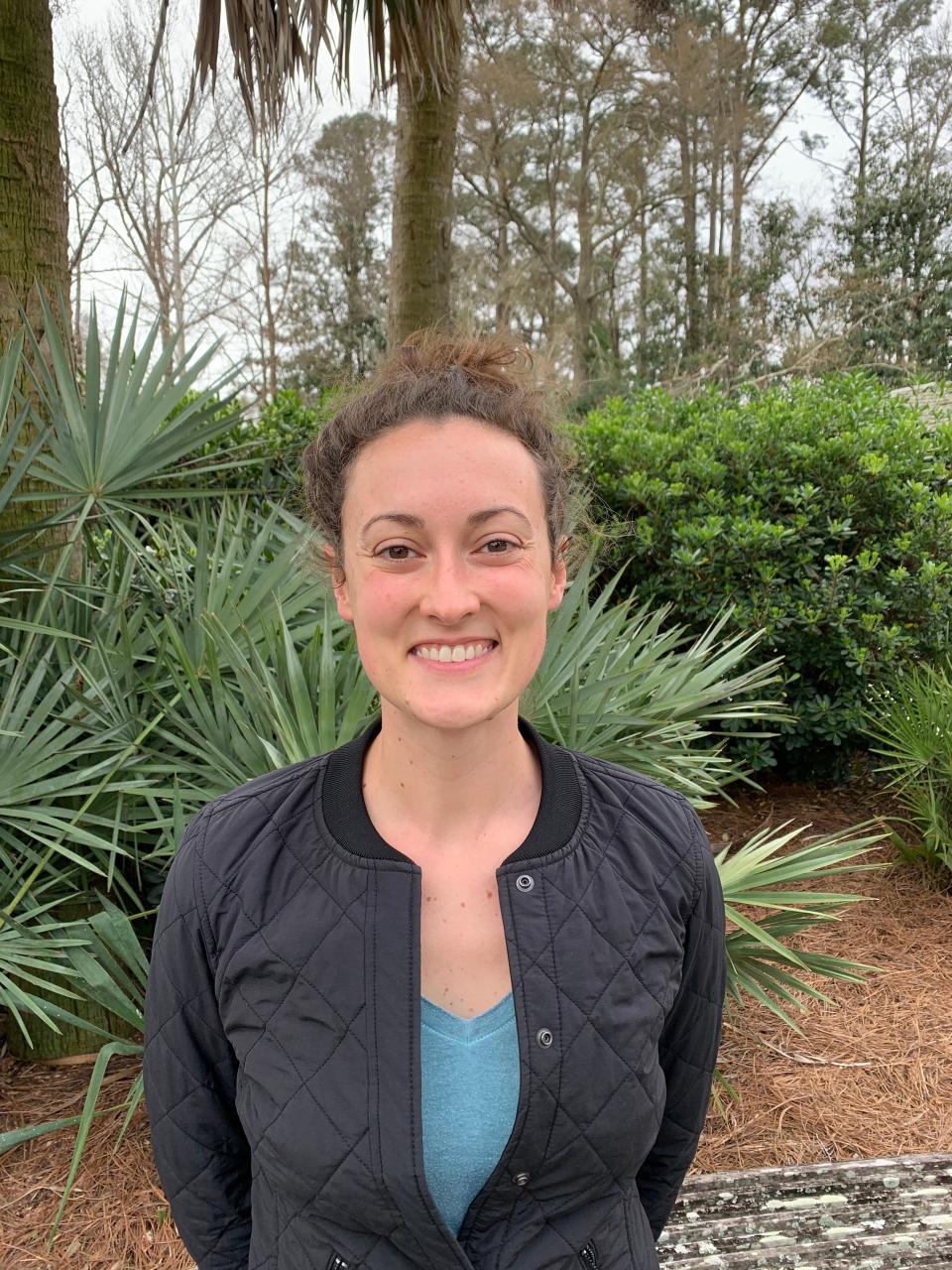Floating wetlands aim to clean up Greenfield Lake

If we were to travel back in time, Greenfield Lake would look quite different than it does today. First dammed in the 1700s, the 100 acre, manmade lake was originally used in rice production. However, the lake departed from agricultural uses long ago, and over the following centuries it has operated as both a public and private recreational space. Nowadays the 250 acre public park boasts walking trails, bike paths, paddle boats, and kayaks, all while hosting countless turtles, a plethora of bird species, and even a few alligators.
While plenty of critters make their home in Greenfield Lake, its highly urban watershed and the resulting stormwater runoff create a number of ecological issues. Because most of the area that drains to Greenfield Lake is pavement or rooftop, every time it rains, the storm washes trash, debris, and pollutants into the lake, causing habitat degradation and dangerous algal blooms.

In 2008 the NC Coastal Federation worked to create a watershed restoration plan that identifies the specific water quality problems in Greenfield Lake as well as goals and strategies to address those problems. The plan outlines how the lake’s algae blooms are directly linked to an overabundance of nutrients found in urban stormwater runoff such as nitrogen and phosphorus. The restoration plan targets efforts to reduce pollution before the runoff ever reaches the lake itself, and many stakeholders throughout the city, county, and region are working to make those improvements. However, the Stormwater Engineering Research Group from NC State University, with the help of the City of Wilmington, the NC Land and Water Fund, and NC Cooperative Extension, are working to treat the runoff once it enters the lake as well by installing a series of floating treatment wetlands.
Floating treatment wetlands are manmade, buoyant mats with small holes that contain individual plants. The roots of those plants dangle down into the water, while the stems and leaves are held above the water and mat’s surface. This allows the plants to extract nutrients from the water below to use to grow. Essentially, the plants are growing in pre-fertilized water! This creates favorable growth conditions for the plants and removes some of those excess nutrients from the water.

Floating treatment wetlands have become a standard tool with which we can clean wastewater or stormwater. However, to reap the benefits of these wetlands, much of a pond’s surface area must be covered. This limit’s their use as the practice can quickly become costly or logistically infeasible. In the case of a large body of water like Greenfield Lake, the amount of required coverage would be both financially and logistically prohibitive. We, NC State’s Stormwater Engineering Research Group, are currently researching alternate solutions to these barriers, specifically through targeted placement of the treatment wetlands.
We have installed two rows of floating treatment wetlands near the intersection of East Lake Shore Drive and Lake Branch Drive. The treatment wetlands span across the entire width of the lake arm, going from bank to bank. This placement ensures that all runoff entering the lake from Squash Branch must pass through the additional treatment provided by the wetlands. By forcing all the incoming water through the wetlands, we hope that they will still have a positive impact on water quality despite being dramatically undersized. Over the course of the next year, we will be collecting water samples both up and downstream of the islands each time it rains. These samples will help us learn about the efficacy of the wetlands and how to help restore and preserve Greenfield Lake for future generations.

This article originally appeared on Wilmington StarNews: Innovative stormwater management aims to clean up Greenfield Lake

